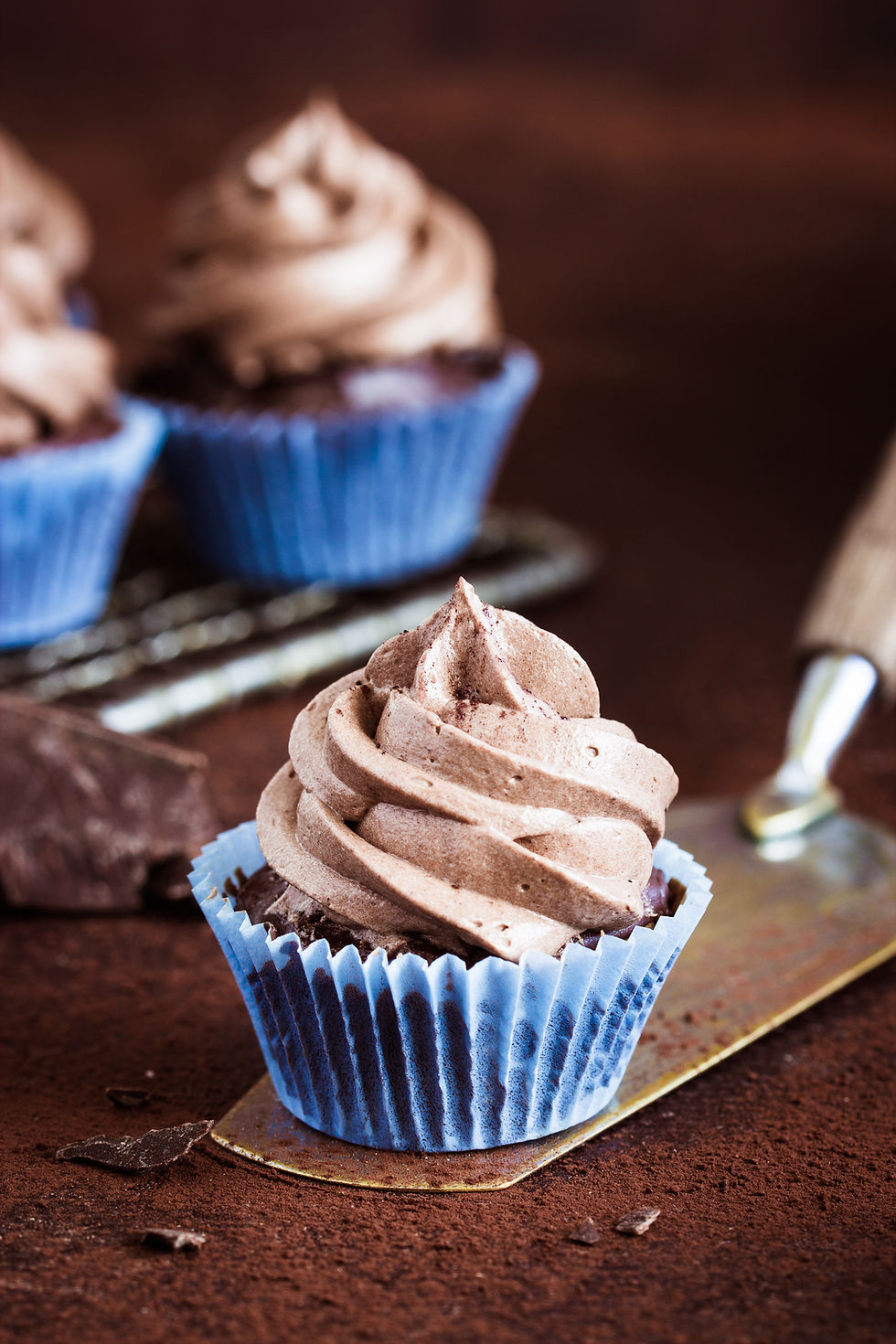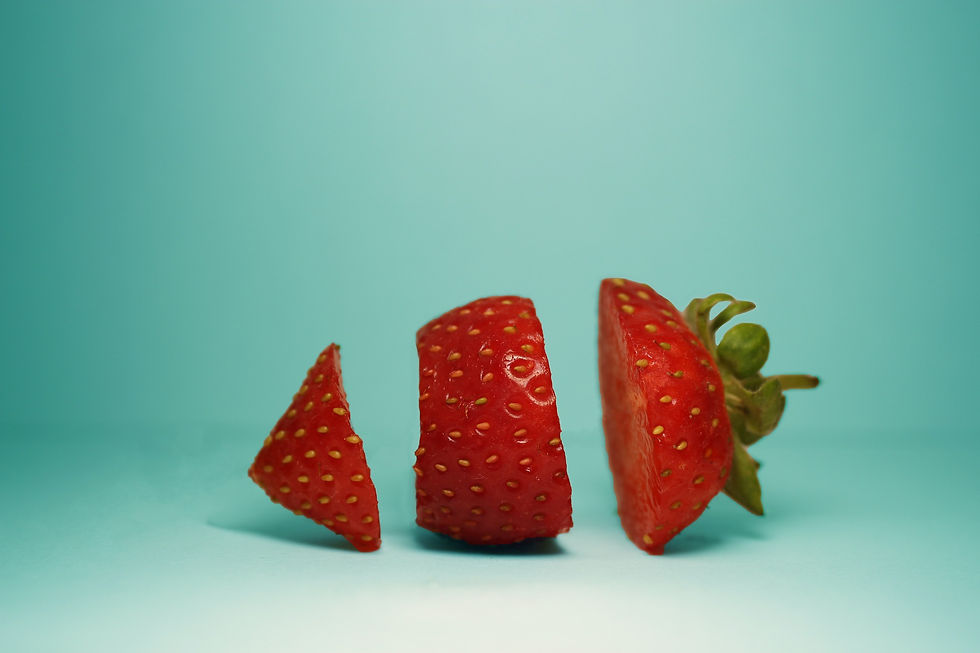Struggling to Call A Truce with Food? Try This.
- Paige Smathers

- Feb 11, 2019
- 5 min read

“I don’t trust myself around that food.”
If this is something you find yourself saying regularly or if you’ve ever even had that thought, read on.
I can’t tell you how many times I’ve heard this sentiment or something similar in my office sitting across from someone feeling deep shame and guilt about admitting to their struggles with food.
My message is that there is hope! To people who feel their struggles with food are so deep and ingrained that there’s no chance for food peace—there are things you can do to feel less chaotic and out of control around food.
Many people decide to try to completely avoid the food that they feel out of control with. It makes sense at first glance, but if we’re being honest about what restriction ends up looking like, it’s usually the opposite of what you’re going for. Complete restriction usually leads to feeling out of control and deprived—maybe even bingeing.
So how can you work smarter to develop a balanced, mentally healthy relationship with a particular food you’ve struggled with in the past?
It’s all about creating new experiences and associations with those foods.
Here are four simple steps to try out to generate positive encounters with foods or situations you've previously struggled with.
Step one: identify a food or situation you view as problematic that you’d like to be able to enjoy periodically, without guilt. This is probably something that’s easy to do and you likely already have the food(s) in mind after reading the first part of this post.
For example, you may have had the experience of eating way too many chocolate chip cookies when they’re in the house. Each time you’ve baked cookies, you’ve found yourself completely sick from eating too much dough and then on top of that, too many warm, fresh cookies. You know you've had too much not because of diet culture's rules, but because of the cues your body gives you of feeling sick. Every time you’ve baked cookies, you’ve ended up with a stomach ache, and you’ve regretted making them in the first place and you’ve likely committed to yourself you will never do that again.
Step two: sit down and visualize a positive experience with this food. It might sound out there, but this really works. Take a moment to visualize yourself around this food or in this situation that you identified as a struggle in step one. Think about what thoughts will arise as you navigate this food/situation and imagine yourself comfortably moving through this situation with ease. Imagine where you'll struggle and visualize yourself confidently navigating it.
Using the example above, imagine yourself on a rainy day where you decide you’d like to make cookies. Imagine yourself combining the ingredients to make dough. See yourself enjoying the process and taking in the experience. Think about how you will experience urges to sneak, binge or overeat the dough but imagine yourself eating an amount that's tasty and fun, but not so much that you're sick. Contemplate how you will make a different choice and listen to your body’s cues of when to stop. Then, imagine those warm, freshly baked cookies and think about how you will confidently and positively enjoy them. Now, think of how it will feel in your body to enjoy some dough and a warm cookie without the typical stuffed, too-full, sick feelings you typically have when you make chocolate chip cookies.
Step three: act out what you’ve visualized. Now is the time to create a positive experience to associate with a food that you’ve struggled with before. As much as possible, clear your life of potential triggers even if it’s for the half hour you’re doing this exercise. Put aside the fears, worries, past experiences, emotions from the day and just make a positive experience happen. This doesn't need to be perfect, and don't expect the acting out to go exactly the way you imagined. But, allow the visualization to help you as you're navigating the real-life choices and thoughts that come up as you expose yourself to this food/situation.
Step four: reflect on the experience. You can do this through writing in a journal, talking with a loved one, telling your therapist/dietitian, and/or sitting quietly and reflecting yourself. There is real value in this step, so don't skip it! Reflecting on the experience helps you learn from anything that you deem as less than ideal from the experience. It also helps you solidify the things that went well for you and helps the new experience with the previously problematic food/situation sink in on a different level.
This entire process is aiding in neuroplasticity—such a cool concept about how the brain has the power to adapt, change, learn, overcome and break through barriers!
Once you’ve had an experience with cookie dough (or something like that where you individually struggle), you will now have the confidence in yourself next time. Rather than feeling like the ending has already been decided before it's even begun, you now have a new pathway in your brain that says you are capable of enjoying cookies without going completely overboard. You will have real experience to draw from that will remind you that you are capable of making different choices. There is so much power in building new connections in your brain by having positive experiences, especially when it comes to food.
It’s easy to believe there’s no chance of being able to coexist around your favorite foods. But, there’s hope. It’s all about creating new experiences and associations with that food. Try it! You’ll love being able to truly enjoy the yummy food or fun situation and gaining new confidence in your ability to practice permission with food.
A few words: this may or may not be appropriate for folks who are currently struggling with an eating disorder. As always, the Positive Nutrition® blog is only intended to invite you to think about ideas related to food and your body and are not a replacement for individualized medical nutrition therapy with a registered dietitian. Also, this post is not intended to convey the message that overeating on cookies is a terrible thing. However, it can be distressing for a person to feel that they are incapable of the simple joy of baking cookies. This method can be very helpful in aiding you to approach previously problematic foods in a more gentle, positive and nourishing way.
If you are interested in learning more about Intuitive Eating, join me for February's webinar: Intuitive Eating: what it is and why it works. The webinar will be held on February 19 at 10am MST. If you can make it live, you'll be able to ask questions and interact with the presentation. But, if you aren't able to make it live, still register because everyone who registers will have lifetime access to the webinar!







Kaiser OTC benefits provide members with discounts on over-the-counter medications, vitamins, and health essentials, promoting better health management and cost-effective wellness solutions.
Obituaries near me help you find recent death notices, providing information about funeral services, memorials, and tributes for loved ones in your area.
is traveluro legit? Many users have had mixed experiences with the platform, so it's important to read reviews and verify deals before booking.